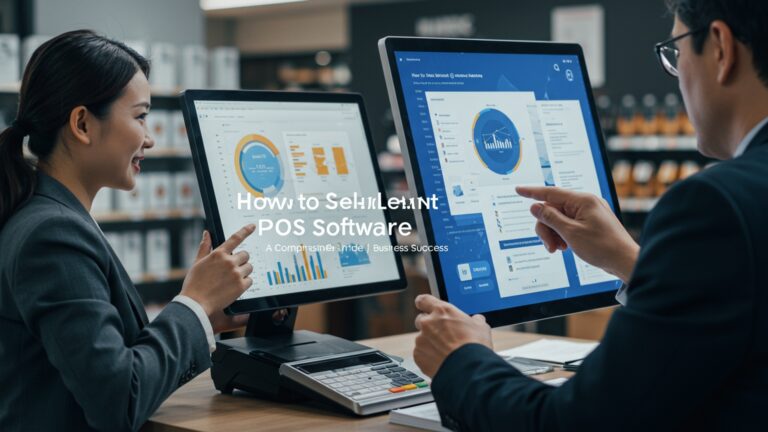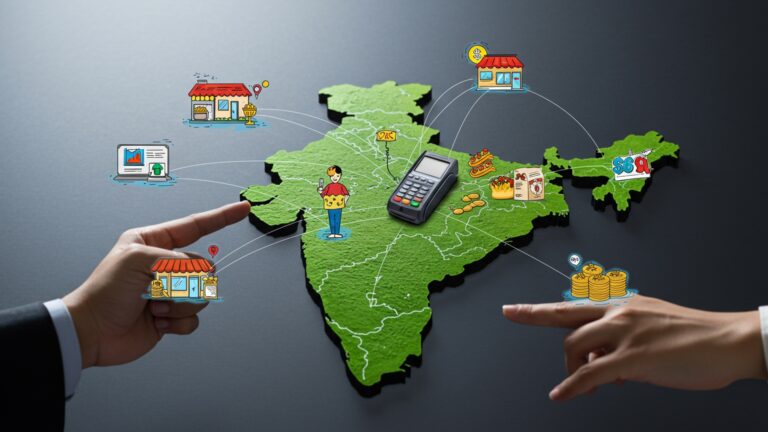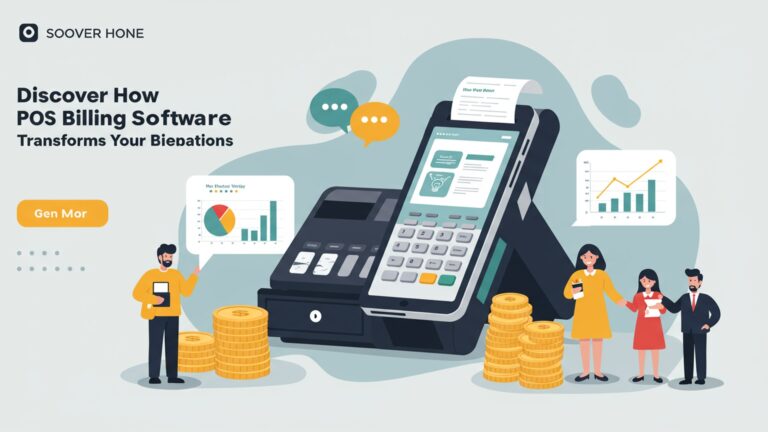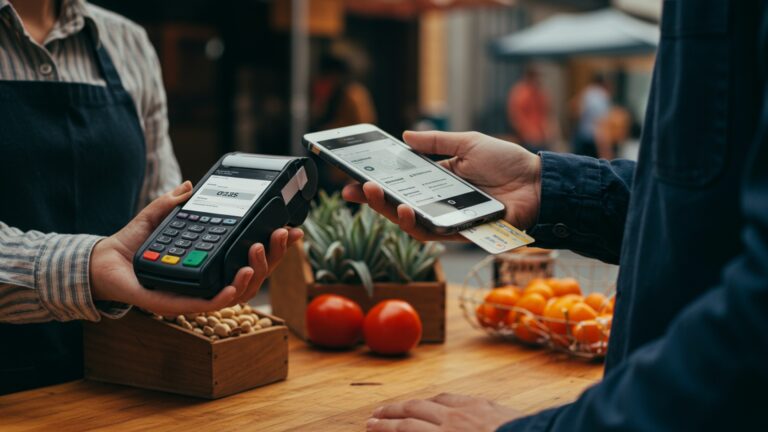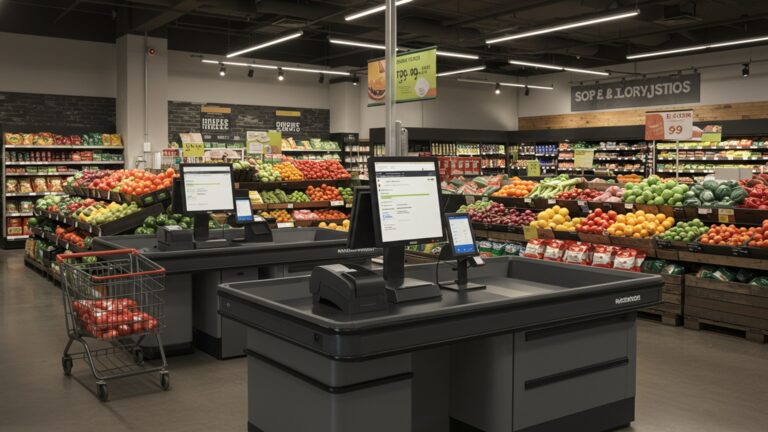How to Integrate Billing and POS Software for Maximum Profit
In the fiercely competitive landscape of modern commerce, businesses often bleed profits through disconnected operational silos. Manual data entry errors, delayed inventory updates. fragmented customer histories are not just inconveniences; they are direct assaults on your bottom line. Integrating billing and POS software transforms these liabilities into assets, offering a unified ecosystem where every transaction, from a quick coffee sale at a bustling cafe to a complex service invoice, instantly updates inventory, customer profiles. financial ledgers. This seamless data flow empowers real-time analytics, optimizes stock management. significantly enhances the customer journey, directly translating into reduced operational costs and maximized revenue opportunities in an era demanding agility and precision.

Understanding Billing and POS Software: The Foundations of Modern Business Transactions
In the dynamic landscape of modern commerce, businesses rely heavily on sophisticated tools to manage their daily operations. Among the most critical are Point of Sale (POS) and billing software. While often used interchangeably or seen as overlapping, understanding their distinct roles and the power of their integration is crucial for any business aiming for maximum profitability.
What is POS Software?
POS software is the central hub for processing transactions in a retail or service environment. It’s what allows a business to complete a sale, whether it’s a customer buying a coffee, a shirt, or paying for a haircut. At its core, POS software facilitates the recording of sales, often managing inventory levels and sometimes even basic customer details.
- Core Functions
- Common Use Cases
Sales processing, cash management, barcode scanning, receipt generation, basic reporting.
Retail stores, restaurants, cafes, salons. any business where a physical transaction occurs.
What is Billing Software?
Billing software, on the other hand, typically focuses more broadly on generating invoices, tracking payments, managing accounts receivable. sometimes even accounts payable. It’s designed for the financial administration side of the business, ensuring that services rendered or products sold are properly invoiced and payments are collected and recorded. While a POS system handles the immediate sale, billing software often manages the financial relationship over a longer period, especially for businesses with recurring services, credit accounts, or complex invoicing needs.
- Core Functions
- Common Use Cases
Invoice generation, payment tracking, accounts receivable management, expense tracking, detailed financial reporting, subscription management.
Service providers, wholesalers, B2B companies, businesses with complex payment terms. anyone needing detailed financial oversight.
Historically, these systems often operated independently. A retail store might have a POS system for sales and then manually enter sales data into a separate billing system for accounting. This siloed approach, while functional, introduced inefficiencies and potential for error, which we will explore further.
The Case for Integration: Why Connect Billing and POS Software?
Operating with separate POS and billing systems, while seemingly manageable, can introduce significant friction and hidden costs into your business operations. Imagine a bustling retail store where every sale processed through the POS system then needs to be manually transcribed into a separate accounting or billing system. This “swivel chair” integration is prone to human error, consumes valuable time. provides an incomplete real-time picture of your business’s financial health.
The primary problems arising from siloed systems include:
- Manual Data Entry & Errors
- Slow Processes
- Lack of Real-Time Data
- Discrepancies & Reconciliation Nightmares
- Inefficient Customer Management
Duplicating data entry between systems is tedious and increases the likelihood of typos, omissions. discrepancies.
Delays in data transfer mean financial reports are not current, inventory counts are often inaccurate. customer service can suffer from outdated insights.
Without a unified view, making informed, agile business decisions becomes challenging. You might miss opportunities to reorder popular items or identify slow-moving stock until it’s too late.
Reconciling sales data with financial records becomes a complex, time-consuming task, often requiring significant effort at month-end or year-end.
Customer purchase history might reside only in the POS, while billing details are elsewhere, making personalized marketing or service difficult.
This is where the power of integrating billing and POS software truly shines. By connecting these two essential functions, businesses can create a seamless flow of insights, automating processes that were once manual and error-prone. This integration isn’t just about convenience; it’s a strategic move that directly contributes to maximum profitability by enhancing efficiency, reducing costs. providing actionable insights.
Key Benefits of Integrating Billing and POS Software
Integrating your billing and POS software isn’t just about making things easier; it’s a strategic move that unlocks a multitude of advantages, directly impacting your bottom line. Here’s how a unified system can transform your business operations and profitability:
- Streamlined Operations and Reduced Errors
- Enhanced Inventory Management
- Improved Financial Accuracy and Reporting
- Better Customer Experience and Loyalty
- Data-Driven Decision Making
- Reduced Operational Costs
- Enhanced Scalability
When billing and POS software are integrated, a sale processed at the point of sale instantly updates financial records, inventory levels. customer accounts. This eliminates the need for manual data entry, drastically reducing the chances of human error. For instance, a customer returning an item at a retail outlet will have their refund processed through the POS. this action will automatically update their account in the billing system and adjust inventory levels, ensuring accuracy across all departments.
Real-time inventory updates are a game-changer. Every sale processed by the POS system immediately deducts items from your stock. This real-time visibility allows for automated reordering when stock levels hit predefined thresholds, preventing both overstocking (tying up capital) and understocking (missing sales opportunities). Businesses can also identify fast-moving and slow-moving products more effectively, optimizing purchasing decisions. A well-known example is a popular coffee shop chain using integrated billing and POS software; they can track sales of specific beans, automatically trigger orders from suppliers. ensure they never run out during peak hours.
Integration ensures that all sales data, discounts, returns. payment methods are accurately recorded and flow directly into your financial ledgers. This simplifies end-of-day reconciliation, reduces discrepancies. provides robust, real-time financial reporting. You can generate profit and loss statements, balance sheets. sales performance reports with confidence, knowing the data is consistent and up-to-date. This level of accuracy is invaluable for tax purposes, audits. strategic financial planning.
With integrated billing and POS software, customer data is unified. Sales history, loyalty points, preferences. contact data are all accessible from a single platform. This enables faster checkouts, personalized promotions. more effective loyalty programs. For example, a salon can use its integrated system to track a client’s past services and product purchases, then offer tailored recommendations or discounts on their next visit, fostering deeper customer relationships and repeat business.
A unified system provides a holistic view of your business performance. You can easily examine sales trends, peak hours, popular products, customer purchasing patterns. even employee performance. This wealth of data empowers you to make informed decisions on staffing, marketing campaigns, product offerings. pricing strategies. For instance, identifying that a specific product sells exceptionally well on weekends allows you to strategically increase stock and promote it during those times.
By automating tasks like data entry, reconciliation. inventory updates, businesses can significantly reduce labor costs associated with these functions. Fewer errors also mean less time spent correcting mistakes, further saving on operational expenses. The efficiency gained by an integrated billing and POS software system often translates directly into higher profit margins.
As your business grows, managing multiple disparate systems becomes increasingly complex and costly. An integrated solution provides a scalable foundation that can easily accommodate new locations, increased transaction volumes. expanded product lines without requiring a complete overhaul of your core systems. This makes expansion smoother and less disruptive.
How Integration Works: Common Methods and Technologies
Integrating billing and POS software involves connecting two distinct systems so they can share data seamlessly. There are several common approaches to achieve this, each with its own technical considerations.
API (Application Programming Interface) Integration
This is by far the most common and robust method for integrating modern software systems. An API is essentially a set of rules and protocols that allows different software applications to communicate with each other. Think of it as a waiter in a restaurant: you (one application) tell the waiter (API) what you want. the waiter takes your order to the kitchen (another application) and brings back what you requested. You don’t need to know how the kitchen works, just how to communicate with the waiter.
- How it works
- Benefits
- Example
When a transaction occurs in the POS system (e. g. , a sale), the POS software uses its API to send specific data (e. g. , item sold, price, customer ID) to the billing software. The billing software then uses its API to receive this data and update its records (e. g. , create an invoice, record a payment). This happens almost instantaneously.
Real-time data exchange, high flexibility, less prone to errors. generally more secure. Many modern billing and POS software solutions are built with open APIs specifically for integration.
A retail POS system like Shopify or Square often provides APIs that allow developers to connect them with popular accounting and billing platforms like QuickBooks or Xero.
Direct Database Integration
This method involves one system directly accessing the database of another system to read or write data. While it can offer a high degree of control, it is generally less recommended for most businesses due to its complexity and potential risks.
- How it works
- Challenges
A custom script or application is developed to connect directly to the underlying databases of both the POS and billing software. It then executes commands to transfer data.
Requires deep technical expertise, can be fragile (updates to one system’s database schema can break the integration), security risks (direct database access). potential for data corruption if not handled carefully. This method is usually reserved for highly customized or legacy systems where API integration isn’t feasible.
Middleware Solutions
Middleware acts as a bridge or intermediary between two or more applications, facilitating communication and data transformation. It’s particularly useful when the POS and billing software don’t have direct, compatible APIs or when complex data mapping and business logic are required.
- How it works
- Benefits
- Examples
Data from the POS system is sent to the middleware, which then transforms it into a format that the billing software can grasp. vice versa. Middleware can also handle complex workflows, error handling. scheduling.
Can connect disparate systems, handles complex data transformations. provides a centralized point for managing integrations.
Integration Platform as a Service (iPaaS) solutions like Zapier, Workato, or custom-built enterprise service buses (ESBs).
Cloud-Based vs. On-Premise Solutions
The deployment model of your billing and POS software also significantly impacts integration options. Cloud-based solutions generally offer easier integration due to their API-first design and accessibility.
Feature Cloud-Based (SaaS) On-Premise Deployment Hosted by vendor, accessed via web browser Installed and run on local servers Integration Ease Generally easier via APIs, designed for connectivity Can be complex; may require custom development or middleware Maintenance Managed by vendor (updates, security) Managed by internal IT team or third-party Cost Structure Subscription-based (monthly/annually) Upfront license cost, ongoing maintenance fees Accessibility Anywhere with internet access Limited to local network unless remote access is configured Scalability Easily scalable, vendor handles infrastructure Requires internal hardware upgrades, more complex
For most modern businesses, especially small to medium-sized ones, opting for cloud-based billing and POS software with robust API capabilities is the most straightforward and cost-effective path to successful integration.
Choosing the Right Billing and POS Software for Integration
Selecting the right billing and POS software is a critical decision that impacts not just your daily operations but also your long-term profitability. When integration is a key goal, the selection process requires careful consideration beyond just individual features.
- Compatibility and Integration Capabilities
- Essential Features for Your Business
- POS
- Billing
- Scalability
- User-Friendliness and Training
- Vendor Support and Reputation
- Cost
This is paramount. Before even looking at features, confirm that the billing and POS software you’re considering are designed to integrate. Look for explicit mentions of APIs, existing integrations with popular accounting software, or partnerships with middleware providers. Ask vendors directly: “Does your POS system integrate seamlessly with [specific billing software you use/plan to use]?” or “What are the common integration methods for your billing software with POS systems?” Choose systems that speak the same language or have well-documented translators.
Beyond integration, the software still needs to meet your core business needs. Consider:
Inventory tracking, multi-store support, customer relationship management (CRM) capabilities, employee management, payment processing options (contactless, mobile), reporting, e-commerce integration.
Invoicing, recurring billing, expense tracking, accounts receivable/payable, payroll integration, financial reporting, multi-currency support, tax compliance.
Prioritize features that directly address your pain points and support your growth strategy. For example, a restaurant chain would need multi-location inventory sync and table management in their POS, while a service-based business might prioritize robust recurring billing and appointment scheduling in their billing software.
Will the billing and POS software grow with your business? If you plan to open more locations, increase transaction volume, or expand your product/service offerings, ensure the chosen solutions can handle this growth without requiring a complete system overhaul. Look for flexible pricing tiers, cloud-based infrastructure. the ability to add modules or users easily.
Even the most powerful software is useless if your staff can’t use it effectively. Opt for intuitive interfaces that minimize the learning curve. Consider the ease of training new employees. Request demos and involve key staff members in the evaluation process to get their feedback on usability. A system that is difficult to navigate will lead to errors and resistance to adoption, undermining the benefits of integration.
Excellent customer support is invaluable, especially during implementation and in case of technical issues. Research vendor reputations, read reviews. inquire about their support channels (phone, email, chat), response times. available training resources. A vendor with a strong track record and responsive support can make a significant difference in the success of your integration project.
Evaluate the total cost of ownership (TCO), which includes initial setup fees, monthly/annual subscriptions, potential customization costs. ongoing support fees. While a lower upfront cost might be appealing, a comprehensive solution with strong integration capabilities often provides better long-term value. Compare different pricing models and ensure they align with your budget and anticipated ROI.
By carefully weighing these factors, businesses can select billing and POS software that not only meets their current needs but also provides a robust, integrated foundation for future growth and maximum profitability.
Implementation Strategies for Seamless Integration
Integrating your billing and POS software is a project that requires careful planning and execution. A well-thought-out implementation strategy minimizes disruption, ensures data integrity. maximizes the benefits of your new unified system.
- Define Objectives and Scope
- Data Migration and Cleansing
- Strategy
- Thorough Testing
- Process a sale at POS, verify it appears correctly in billing.
- Process a return, check inventory and financial updates.
- Apply discounts, loyalty points, gift cards.
- Test different payment methods.
- Generate various reports from both systems and compare.
- Simulate peak transaction volumes.
- Staff Training
- Phased Rollout vs. Big Bang
- Phased Rollout
- Big Bang
- Vendor Collaboration
- Post-Implementation Review and Optimization
Before touching any software, clearly articulate what you want to achieve with the integration. Is it to reduce manual data entry, improve inventory accuracy, enhance customer service, or gain better financial insights? Define the scope: which specific data points need to be synchronized? Which workflows will be automated? Establishing clear objectives and a detailed scope will guide the entire project and help measure success.
If you’re moving from existing systems, migrating your historical data is a critical step. This includes customer records, product catalogs, historical sales data. outstanding invoices. Before migration, conduct a thorough data cleansing process to remove duplicates, correct inaccuracies. standardize formats. “Garbage in, garbage out” applies here – clean data ensures accurate reporting and smooth operations in your new integrated billing and POS software.
Plan the order of migration (e. g. , products first, then customers, then historical transactions). Utilize vendor-provided migration tools or engage a specialist for complex data sets.
Never skip this step. Before going live, rigorously test every aspect of the integration. Create a test environment (if possible) and run through various scenarios:
In my experience, many issues surface during testing that would be far more disruptive if discovered post-launch. In one instance, a client integrating their billing and POS software for a new café realized during testing that their loyalty points system wasn’t correctly deducting from the customer’s balance in the accounting module – a crucial fix before opening day!
Successful adoption hinges on adequately trained staff. Develop a comprehensive training program that covers both the new integrated workflows and the specific features of the billing and POS software. Provide hands-on training, create user manuals. designate internal “super-users” who can provide ongoing support. Address any concerns or resistance to change upfront, emphasizing the benefits to their daily tasks.
Implement the integration in stages (e. g. , integrate one module first, or roll out to one location). This allows for adjustments and minimizes risk. It’s often preferred for larger, more complex businesses.
Go live with the full integration across all operations simultaneously. This can be faster but carries higher risk if unforeseen issues arise. More suitable for smaller businesses with simpler requirements.
Choose the approach that best suits your business size, complexity. risk tolerance.
Maintain open lines of communication with both your billing and POS software vendors throughout the implementation. They are experts in their systems and can provide invaluable support for troubleshooting, configuration. best practices. If you’re using a third-party integrator, ensure clear communication channels are established among all parties.
The work doesn’t end at go-live. Schedule regular reviews to assess how the integrated system is performing against your initial objectives. Gather feedback from staff, monitor key metrics. identify areas for optimization. Technology evolves. so should your processes.
Real-World Applications and Case Studies
The theoretical benefits of integrating billing and POS software truly come to life when observed in real-world business scenarios. These examples highlight how diverse businesses leverage integration for maximum profit and operational efficiency.
Retail Store: The Fashion Boutique
Consider “Chic Threads,” a growing fashion boutique with a physical store and an online presence. Previously, they used a basic POS system for in-store sales and a separate spreadsheet for inventory and a basic online tool for invoicing wholesale orders. This led to:
- Inaccurate stock counts: Online sales wouldn’t immediately update in-store POS inventory, leading to overselling or disappointed customers.
- Manual reconciliation: End-of-day sales data had to be manually entered into their accounting software.
- Fragmented customer data: Loyalty points only tracked in-store, making it hard to reward online customers.
Chic Threads implemented a cloud-based billing and POS software solution that seamlessly integrates both their physical store and e-commerce platform. Their chosen system featured robust inventory management, a unified customer database. direct integration with their accounting software.
- Real-time Inventory
- Automated Accounting
- Enhanced Customer Loyalty
- Improved Profitability
A sale made in-store or online instantly updates global stock levels, preventing overselling and allowing for timely reorders of popular items.
All sales data, returns. payment types automatically flow into their accounting module, drastically reducing manual data entry and reconciliation time.
A unified customer profile means loyalty points are earned and redeemable across both online and offline channels, leading to increased customer retention and personalized marketing efforts.
Reduced labor for data entry, optimized inventory (fewer markdowns, no lost sales due to stockouts). better customer engagement contributed to a 15% increase in net profit within the first year.
Restaurant: “The Daily Grind” Coffee Shop
“The Daily Grind” is a popular coffee shop that offers dine-in, takeout. a small selection of baked goods. They initially struggled with managing orders, processing payments quickly during peak hours. tracking ingredient costs accurately.
They adopted a specialized billing and POS software designed for restaurants. This system integrated their order-taking terminals, kitchen display system (KDS), payment processors. backend inventory/billing modules.
- Faster Service
- Precise Costing
- Simplified End-of-Day
- Data-Driven Menu Optimization
Orders taken at the counter or via self-service kiosks are sent directly to the KDS, reducing order errors and speeding up preparation.
Each coffee and food item sold automatically deducts ingredients from inventory, allowing “The Daily Grind” to accurately calculate prime costs and identify areas for waste reduction.
Sales figures, tips. payment reconciliations are automated, cutting down the closing process from an hour to mere minutes.
By analyzing sales data, they identified their most profitable items and peak selling times, enabling them to adjust staffing and promotions accordingly, leading to a 10% increase in average transaction value.
Service Business: “Elite Auto Service” Garage
“Elite Auto Service” is an independent car repair garage that manages appointments, service jobs, parts ordering. customer billing. Their old system involved paper schedules, manual invoicing. a separate inventory for parts.
They implemented an automotive-specific billing and POS software that combines appointment scheduling, job management, parts inventory. invoicing into one platform.
- Efficient Scheduling
- Accurate Billing
- Streamlined Parts Management
- Enhanced Customer Communication
Technicians can view their daily schedule and associated job details directly from the system, reducing downtime.
Parts used for a repair are automatically added to the customer’s invoice from inventory, ensuring accurate charges and preventing forgotten line items. Labor hours are tracked and billed precisely.
When a part is ordered for a job, the system tracks its arrival and notifies the technician. Integrated inventory management helps them maintain optimal stock levels for common parts, reducing wait times for customers.
The system allows for automated service reminders and follow-up communications, improving customer retention. This integration of billing and POS software has led to a noticeable increase in customer satisfaction and repeat business.
These examples illustrate that regardless of the industry, integrating billing and POS software is a powerful strategy for achieving operational excellence, gaining valuable insights. ultimately, maximizing profit.
Overcoming Challenges in Integration
While the benefits of integrating billing and POS software are substantial, the process is not without its challenges. Being aware of these potential hurdles and planning for them can significantly contribute to a smoother and more successful implementation.
- Data Silos and Inconsistencies
- Challenge
- Solution
- Technical Complexities and Expertise
- Challenge
- Solution
- Resistance to Change from Staff
- Challenge
- Solution
- Security Concerns
- Challenge
- Solution
- Vendor Lock-in and Compatibility Issues
- Challenge
- Solution
When moving from disparate systems, data might be scattered across various databases, in different formats, or contain inconsistencies (e. g. , product names spelled differently, duplicate customer entries). This “dirty data” can severely hamper integration efforts and lead to inaccurate reporting in the new system.
Prioritize data cleansing and standardization before migration. Develop a clear data mapping strategy between the old and new systems. Utilize data migration tools or engage experts to help with this process. Establish strict data entry protocols moving forward to maintain data integrity.
Integrating software often requires a certain level of technical understanding, especially when dealing with APIs, custom fields, or middleware. Businesses without in-house IT expertise might find the process daunting.
If you lack internal technical resources, don’t hesitate to engage a professional integration specialist or leverage the support services offered by your billing and POS software vendors. Many vendors offer implementation packages or can recommend certified partners who specialize in their products. For complex integrations, a dedicated project manager can be invaluable.
Employees accustomed to older systems might resist adopting new software and workflows, even if they are more efficient. Fear of the unknown, perceived complexity, or concerns about job security can lead to low adoption rates and undermine the integration’s success.
Implement a robust change management strategy. Involve staff early in the planning process, clearly communicate the “why” behind the integration (how it benefits them). provide comprehensive training. Offer ongoing support and create champions within the team who can help others. Emphasize that the new billing and POS software is a tool to make their jobs easier, not harder.
Integrating systems means data is flowing between different platforms, potentially increasing the attack surface for cyber threats. Protecting sensitive customer and financial data is paramount.
Choose billing and POS software vendors with strong security protocols, including data encryption, regular security audits. compliance certifications (e. g. , PCI DSS for payment processing). Ensure any custom integrations or middleware also adhere to best security practices. Implement strong access controls and train staff on data security awareness.
Some software vendors might make it difficult to integrate with competing products or charge exorbitant fees for API access, potentially leading to “vendor lock-in” where switching becomes very costly. Also, future updates from one vendor might inadvertently break an existing integration with another.
Research vendor flexibility and openness to integration before committing. Look for systems with well-documented, open APIs and a track record of supporting third-party integrations. Consider using middleware solutions that act as a buffer between systems, making it easier to swap out one component without rebuilding the entire integration. Regularly test integrations after system updates.
By proactively addressing these challenges, businesses can navigate the integration process more effectively, ensuring their billing and POS software works harmoniously to drive maximum profit.
Actionable Takeaways for Maximizing Profit with Integrated Systems
Having successfully integrated your billing and POS software, the next step is to continuously leverage its power to drive maximum profitability. Here are actionable strategies you can implement:
- Regularly assess Integrated Data for Strategic Insights
- Optimize product/service offerings: Discontinue slow-moving items, promote best-sellers.
- Refine pricing strategies: Identify opportunities for dynamic pricing or bundled offers.
- Improve staffing levels: Schedule staff more effectively during peak hours to enhance service and reduce labor costs.
- Target marketing campaigns: Segment customers based on purchase history for personalized promotions.
- Leverage Automated Features to Reduce Labor Costs
- Automated inventory updates and reorder points.
- Automatic transfer of sales data to accounting/billing.
- Automated invoice generation and payment reminders.
- Automated loyalty point accrual and redemption.
- Utilize Loyalty Programs and CRM Driven by Integrated Data
- Offer personalized discounts and promotions.
- Send targeted communications (e. g. , birthday offers, exclusive previews).
- Identify and reward your most valuable customers.
- Optimize Inventory Based on Real-Time Sales
- Forecast demand more accurately.
- Set optimal reorder points and quantities.
- Identify and liquidate slow-moving inventory to free up cash flow.
- Streamline supplier relationships based on precise purchasing needs.
- Continuously Train Staff and Update Processes
- Explore Advanced Features and Further Integrations
- E-commerce integration
- Marketing automation
- Employee scheduling/payroll
- Business intelligence (BI) tools
Don’t just collect data; review it. Your integrated billing and POS software provides a goldmine of insights. Regularly review reports on sales trends, customer purchasing behavior, peak transaction times, product profitability. inventory turnover. Use these insights to:
For instance, a retail store might discover through integrated data that specific accessories sell significantly better when purchased alongside a particular clothing line. They can then cross-merchandise these items more effectively to boost sales.
The core benefit of integration is automation. Ensure you are fully utilizing all automated features to minimize manual tasks. This includes:
By freeing up staff from repetitive data entry and reconciliation, they can focus on higher-value activities like customer service, merchandising, or strategic planning, directly impacting profitability.
A unified customer database, a direct result of integrated billing and POS software, is a powerful tool for customer relationship management (CRM). Implement or enhance loyalty programs that track purchases across all channels. Use this data to:
A cafe using integrated billing and POS software can automatically send a free coffee voucher to customers after every tenth purchase, fostering loyalty and repeat business without manual tracking.
Real-time inventory visibility is crucial. Don’t let valuable capital sit on shelves as stagnant stock. don’t miss sales due to stockouts. Use the integrated data to:
This level of inventory optimization directly contributes to reduced carrying costs and increased sales efficiency.
Technology evolves. so should your team’s knowledge. Provide ongoing training for your staff on new features of the billing and POS software, best practices. efficient workflows. Encourage feedback from frontline employees, as they often identify opportunities for process improvement. Regularly review your operational processes to ensure they align with the capabilities of your integrated system.
Once your core billing and POS software integration is stable, explore advanced features or further integrations that can add even more value:
If not already done, connect your online store for a truly omnichannel experience.
Link with email marketing platforms for automated campaigns based on purchase triggers.
Integrate with HR software to streamline workforce management.
For more sophisticated data analysis and visualization.
Each additional integration point, when strategically chosen, can further automate tasks, provide deeper insights. contribute to maximizing your business’s profit potential.
Conclusion
Seamless integration of billing and POS software is no longer a luxury. a strategic imperative for maximizing your business’s profitability. My personal tip for businesses embarking on this journey is to start with a clear understanding of your current operational bottlenecks; often, the greatest profit gains stem from automating the most time-consuming manual tasks. For instance, I recently advised a growing retail boutique that, by connecting their inventory management directly to their POS, virtually eliminated stock discrepancies and reduced their year-end audit time by 30%, directly impacting their bottom line. This unified approach, leveraging current trends in cloud-based solutions, empowers you with real-time data, preventing costly errors like overselling or mispricing. Consequently, you gain unparalleled insights into sales performance, customer preferences. inventory levels, transforming mere transactions into actionable intelligence. Remember, a truly integrated system, much like an efficient circulatory system, ensures every part of your business is fed accurate, timely details. For deeper insights into streamlining your operations, consider exploring guides on mastering POS billing accuracy. Ultimately, investing in this synergy isn’t just about cutting costs; it’s about future-proofing your venture and positioning it for sustained, profitable growth in a competitive landscape. Take that decisive step towards a smarter, more efficient business today.
More Articles
Simplify Your Transactions How to Master POS Billing Software for Accuracy
A Complete Guide How to interpret and Use Essential POS Software Features
Future Proof Your Business How to Leverage Cloud Based POS Software Benefits
Unleash Business Mobility How to Implement Mobile POS Software Solutions Seamlessly
Best Billing Software in India: Complete Guide for 2025
FAQs
What’s the big deal about integrating my billing and POS systems?
Integrating these systems means your sales data, inventory. customer data all talk to each other seamlessly. This cuts down on manual data entry errors, speeds up checkout. gives you a much clearer, real-time picture of your business. Essentially, it makes everything run smoother and more accurately.
How does combining these systems actually boost my profits?
It helps in multiple ways! You’ll minimize inventory shrinkage with accurate tracking, reduce labor costs by automating tasks, identify your best-selling products and busiest times for smarter stocking. even personalize customer offers based on purchase history, leading to more sales. Plus, faster checkouts mean happier customers and more transactions.
What types of businesses get the most out of this integration?
Any business that deals with sales, inventory. customer transactions can benefit. This includes retail stores, restaurants, cafes, salons, service-based businesses. even small manufacturers. If you process payments and manage stock, you’re a prime candidate.
What should I look for when choosing integrated billing and POS software?
Prioritize features like real-time inventory updates, robust reporting and analytics, customer relationship management (CRM) capabilities, employee management tools. scalability to grow with your business. Make sure it’s user-friendly for your staff and offers good customer support.
Will it be a nightmare to actually set this all up?
It doesn’t have to be! Many modern systems are designed for relatively easy setup. The key is good planning: back up your data, clearly define your needs. choose a provider with solid onboarding support. While there might be a learning curve, the long-term benefits far outweigh the initial effort.
Can I integrate my current POS system with a new billing solution, or do I need to start fresh?
It depends on your existing systems. Some modern POS platforms offer APIs (Application Programming Interfaces) that allow them to connect with various billing, accounting, or e-commerce solutions. But, if your current setup is very old or proprietary, it might be more cost-effective and less complicated in the long run to upgrade to an all-in-one integrated system.
After integration, how can I make sure I’m really using it to its full potential?
Train your staff thoroughly on all the features – not just the basics. Regularly review the analytics and reports generated by the system to spot trends, identify areas for improvement. make data-driven decisions. Don’t be afraid to explore advanced features like loyalty programs or targeted promotions. Continuous learning and adaptation are key!

